Vodafone UK Trial Pushes 5G mmWave Broadband Speeds up to 4Gbps UPDATE

Broadband ISP and mobile operator Vodafone UK has today announced the results of two recent 5G trials using a large chunk of millimetre wave (mmWave) radio spectrum, which managed to deliver home broadband (FWA) connectivity peak speeds of up to 4Gbps (dropping to 2.8Gbps in a more traditional mobile environment).
The challenge with using mmWave (mmW) bands for low power wireless communications stems from the fact that such signals are extremely weak and don’t tend to travel very far. As a result, constructing a mobile network that can harness them tends to be very expensive (dense and complex), which limits the viability of such bands to busy areas (e.g. shopping malls, events etc.) or for fixed wireless access (FWA) style links to homes and businesses.
At present, UK mobile operators aren’t able to harness much mmW spectrum because Ofcom has yet to conduct their auction of the related 26GHz and 40GHz bands (here), which is itself awaiting the outcome of the proposed merger between Vodafone and Three UK. But the regulator does allow mobile operators to trial such spectrum, which is something we’ve already seen EE doing and now Vodafone has done something similar.
Advertisement
The operator – supported by partners at Qualcomm Technologies Inc. and Ericsson – recently conducted two successful trials that demonstrated the potential performance benefits of mmW (i.e. faster data speeds, increased capacity, reduced latency, and enhanced network performance). Both trials made use of Ericsson’s AIR 5322 (antenna-integrated radio) and Baseband 6651 technology, as well as various devices powered by the Snapdragon® X65 5G Modem-RF System from Qualcomm.
The first trial (fixed wireless access)
The first trial focused on how the higher download and upload speeds of mmWave spectrum can help deliver “fibre-like speeds and home broadband services” over the airwaves without the need for extensive underground infrastructure deployment. Below are some key findings from the Newbury location using full spectrum bandwidth (800MHz of mmWave spectrum). But they haven’t told us which specific bands this involved.
Within 100 metres of the mast, the devices (from Askey and ZTE as well as a MiFi from Netgear, powered by the Snapdragon X65 5G Modem-RF System) were able to achieve peak download speeds up to 4Gbps and 500Mbps for uploads. At a range of 400 metres, the peak download speeds were 2.3Gbps and 200Mbps for uploads. At the edge of the coverage zone (up to 700 metres), the peak download speed was 500Mbps. Latency was also found to be 4-5 times lower than existing 5G capabilities, but they didn’t include any specific millisecond figures for this.
The trial also demonstrated a higher level of data upload to the network. In addition to the home broadband use case, the higher upload speeds could be used to wirelessly connect cameras and broadcasting equipment to provide a more cost-effective and flexible solution for media companies to cover events.
Advertisement
The second trial (mobile connectivity at a busy stadium)
The second trial took place in a London football stadium, to address network congestion. With a stadium capacity of 20,000 people, the club’s fans can often experience network congestion due to the large, concentrated number of devices trying to connect at the same time.
The higher capacity of mmWave spectrum can help connect more people simultaneously, to improve customer experience. Using a commercial Snapdragon-powered smartphone, the trial registered peak download speeds up to 2.8Gbps at various points with unobstructed views of the mast, and even 500Mbps for locations that didn’t have a direct line-of-sight.
However, Vodafone didn’t include any figures for upload performance, which seems to overlook that such events will often generate a lot more upstream traffic than normal due to social media sharing etc.
Andrea Dona, Chief Network Officer, Vodafone UK, said:
“While mmWave is a niche technology for mobile network operators in the UK, the uplift to customer experience will be incredible. With installations on a small number of sites, millions of people could benefit multiple times per week. This trial demonstrates how we can significantly improve customer experience by strategically targeting today’s challenges.”
Besides high-capacity use cases, mmWave technology would also be useful for businesses with low latency use cases such as factory automations, robotics, remote assisted training, and surgery. But much will depend upon the outcome of Ofcom’s future auction and how much investment the various mobile operators are willing to put behind its deployment.
Advertisement
UPDATE 24th Oct 2024 @ 10:13am
Vodafone has kindly confirmed that their trials are using the 24.5-25.3GHz band (temporary licence).
Mark is a professional technology writer, IT consultant and computer engineer from Dorset (England), he also founded ISPreview in 1999 and enjoys analysing the latest telecoms and broadband developments. Find me on X (Twitter), Mastodon, Facebook, BlueSky, Threads.net and Linkedin.
« Virgin Media UK Quietly Downgrade Netflix Standard on Top TV Bundles






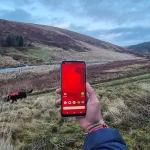
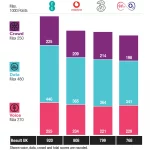

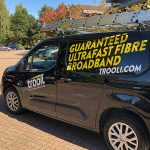

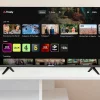
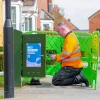

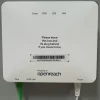








































mmWave feels like a nobrainer for busy train stations, stadiums, venues etc… but absolutely useless everywhere else
But equally, will be quite a few years before there’s any possibility of benefit because phones aren’t sold with mmWave hardware in the UK like they are in the US
They should fix the signal first. Many spots in London where now there’s only EDGE. In 2024. A visionary whoever decided to switch off 3G. On the train ride from London to Gatwick there’s almost zero signal. While a few years it was fine with at least 3G.
lol vodafone can’t even do proper 5G and are using DSS everywhere with outdated poles
Wonder if they have the backhaul to actually provide that speed??? Nah, i’m not wondering at all!